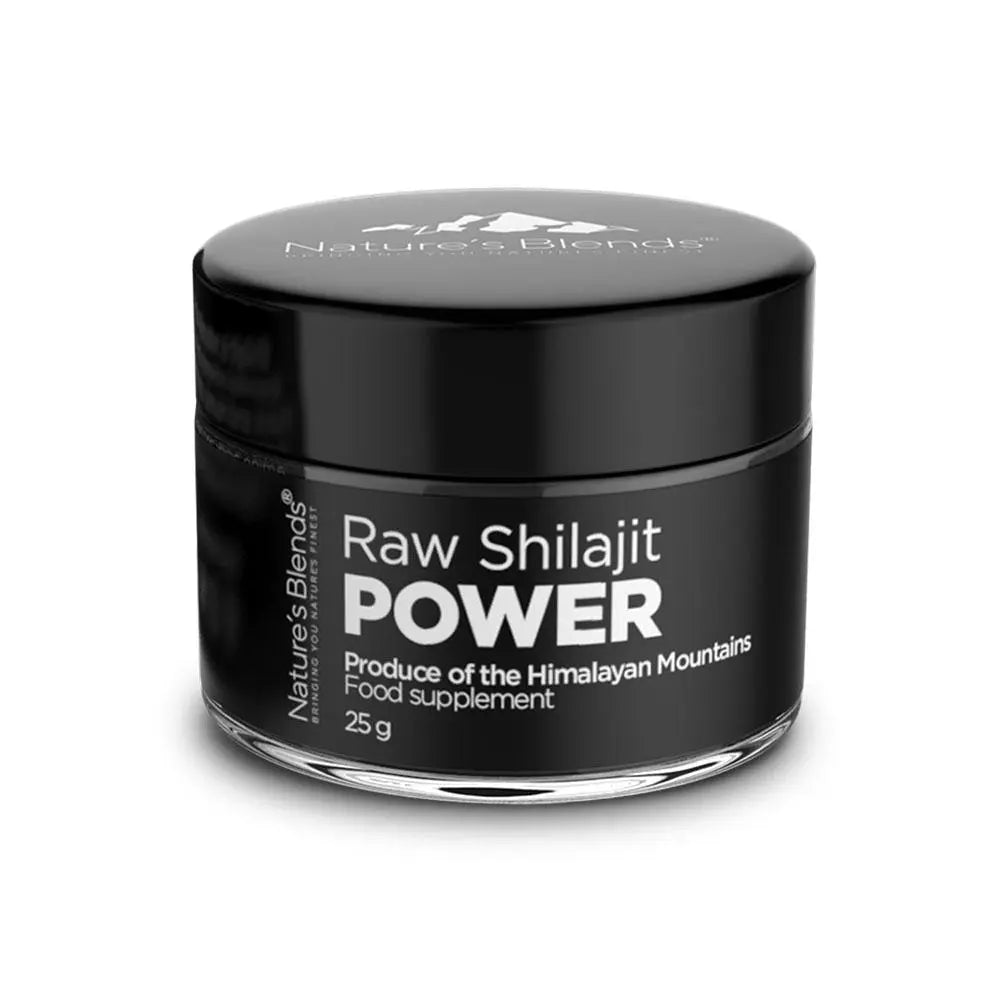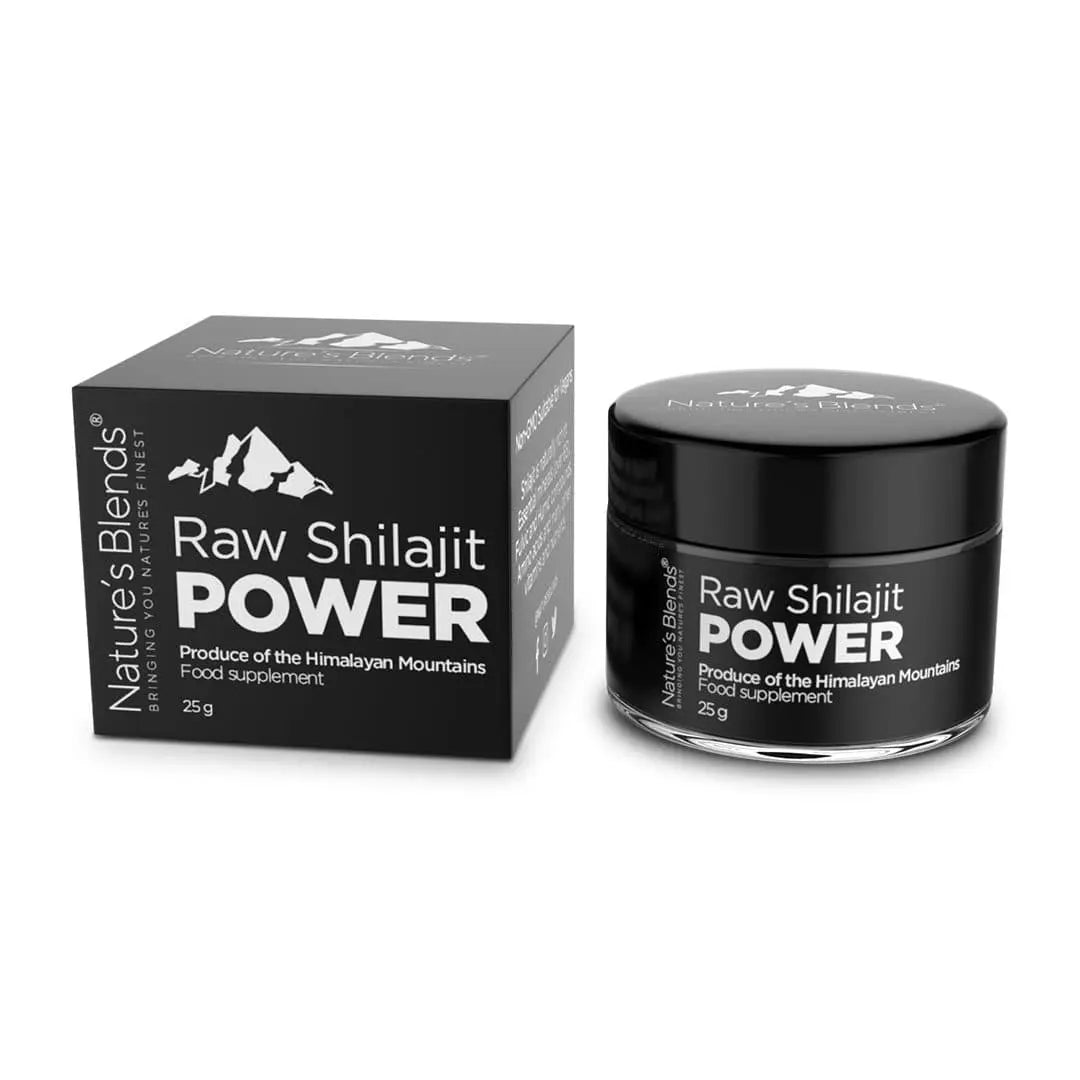

Will I see immediate results?
Most customers report noticeable improvements in energy within 7-10 days of consistent use. The fulvic and humic acids in our Shilajit work at the cellular level to combat fatigue and enhance nutrient absorption. For optimal results, take a small amount (rice grain size) daily for at least 3 weeks.
What makes this Shilajit worth 5X more than others?
Our Pakistani Shilajit contains exceptionally high levels of bioactive compounds and over 85 minerals in their natural state. Unlike diluted or processed alternatives, our raw resin is collected from high-altitude rocks using traditional methods that preserve its full potency. The blackish-brown color and distinct resinous texture confirm its authenticity and superior quality.
Why do biohackers call this "nature's miracle mineral"?
Elite performance optimizers treasure Shilajit for its ability to enhance mitochondrial function, regulate ATP production, and balance crucial minerals without side effects. Unlike synthetic compounds, this ancient resin supports cellular energy production naturally, making it invaluable for those seeking sustainable performance enhancement.
What's the optimal dosage for maximum results?
Start with a rice grain-sized portion (approximately 100-300mg) dissolved in warm water or tea each morning on an empty stomach. This allows for maximum absorption. After two weeks, you may increase to twice daily if desired. Consistency is key—regular use yields dramatically better results than occasional consumption.
(4.8) 468+ Reviews
Lab tested
Zero additives
Feel decades younger daily
Pure energy without crashes
Boost testosterone & strength
SAVE

Will I see immediate results?
Most customers report noticeable improvements in energy within 7-10 days of consistent use. The fulvic and humic acids in our Shilajit work at the cellular level to combat fatigue and enhance nutrient absorption. For optimal results, take a small amount (rice grain size) daily for at least 3 weeks.
What makes this Shilajit worth 5X more than others?
Our Pakistani Shilajit contains exceptionally high levels of bioactive compounds and over 85 minerals in their natural state. Unlike diluted or processed alternatives, our raw resin is collected from high-altitude rocks using traditional methods that preserve its full potency. The blackish-brown color and distinct resinous texture confirm its authenticity and superior quality.
Why do biohackers call this "nature's miracle mineral"?
Elite performance optimizers treasure Shilajit for its ability to enhance mitochondrial function, regulate ATP production, and balance crucial minerals without side effects. Unlike synthetic compounds, this ancient resin supports cellular energy production naturally, making it invaluable for those seeking sustainable performance enhancement.
What's the optimal dosage for maximum results?
Start with a rice grain-sized portion (approximately 100-300mg) dissolved in warm water or tea each morning on an empty stomach. This allows for maximum absorption. After two weeks, you may increase to twice daily if desired. Consistency is key—regular use yields dramatically better results than occasional consumption.
WHY NATURE'S BLENDS?
Lab tested
Zero additives
Feel decades younger daily
Pure energy without crashes
Cellular repair while you sleep
Real results!
"After trying so many supplements with zero effect, this Shilajit delivers. My inflammation noticeably reduced within weeks, energy improved, and I'm sleeping better than I have in years. This is the genuine stuff - worth every penny."
- Terry S.
#1 ANCIENT REMEDY for SUSTAINED ENERGY & PERFORMANCE
Enhanced Energy & Stamina*
Cognitive Performance*
Mineral Balance & Absorption*
Natural Detoxification*
Cellular Regeneration*
85+ Bioactive Minerals*
(4.8) 468+ Reviews


WORKS WITHIN 30 DAYS

FULL BODY VITALITY & STRENGTH
(4.8) 468+ Reviews


Secure Checkout Guaranteed


Over 25,000+ CUSTOMERS LOVE OUR HEALING
Restored masculine energy
"At 52, I noticed a concerning decline in bedroom performance. Within 3 weeks of taking Shilajit, my wife noticed the difference before I mentioned anything. Morning vitality returned and stamina improved dramatically. Natural solution that actually works."
- James K, 52
Energy finally returned
"My fatigue was debilitating - I needed naps daily. Started taking Shilajit and by day 10, I could feel a difference in my baseline energy. Now I work through the day without crashing and have energy for my kids after work. Life-changing."
- Michael T, 43
Critical for recovery
"As an athlete in my 30s, recovery took longer each year. Shilajit has cut my recovery time significantly. Muscle soreness decreased, energy levels stabilized, and my performance improved. The real thing works."
- Humza M, 36
Unexpected benefits
"Started taking for general health but noticed dramatic improvements in focus and drive. Brain fog lifted within weeks. At 58, I feel mentally sharper than in my 40s. My wife now takes it too and reports similar results."
- Robert M, 58

Secure Checkout Guaranteed

WHY CHOOSE US OVER OTHERS? 👀
US VS THEM
100% Raw Himalayan resin 🏔️
Rich in 85+
minerals 💎
Full-spectrum fulvic acid ⚡
Zero chemical processing 🧪
Verified by 3rd party labs 🔬






OTHERS





Tried everything
"My fatigue was constant and I needed something that actually works - this oil revitalized my energy levels & I feel like myself again!"
- Matthew White, 37
Good for gut
"My stomach issues were ruining meals and I wanted a natural approach - this black seed oil calmed my system & I enjoy eating without worry!"
- Richard Wilson, Los Angeles, California.

Secure Checkout Guaranteed

Complete transformation
"I've struggled with low energy for years. After two weeks with this Shilajit, I noticed a significant difference in my stamina and mental clarity. Now I can work all day and still have energy for evening activities. Nothing else worked like this."
- Andreas S, 34
Quality matters
"I tried cheaper Shilajit products before finding this one. The difference is obvious - this Pakistani resin dissolved properly and had immediate effects on my overall wellbeing. My joint discomfort decreased and I sleep better than I have in years."
- James T, 35